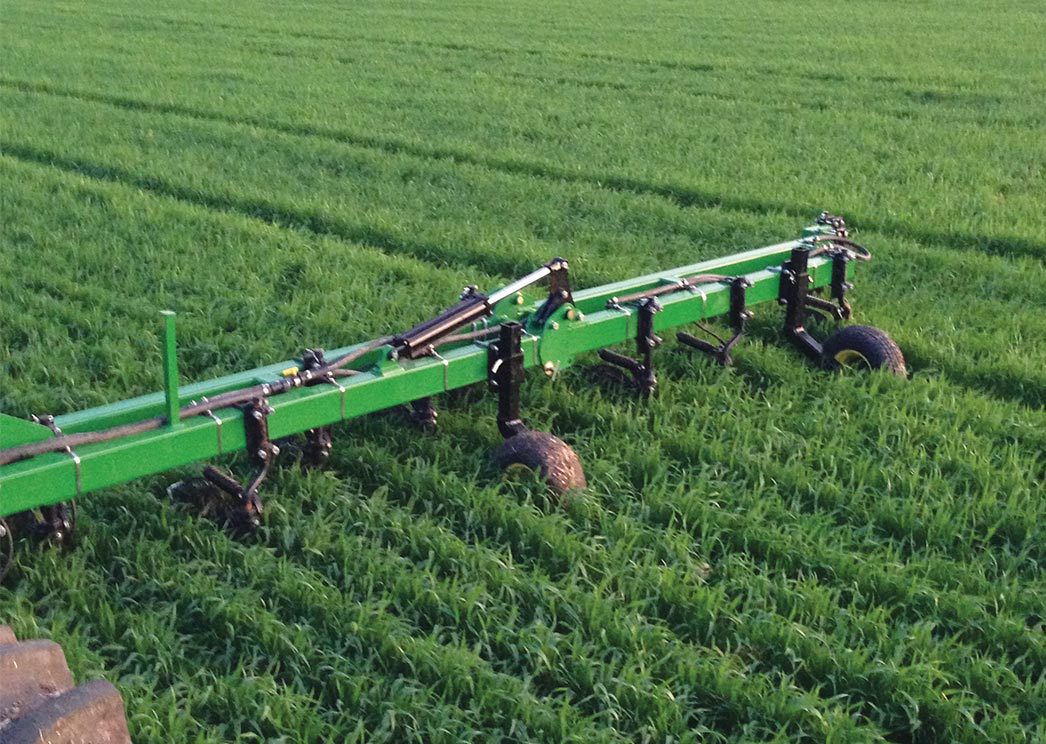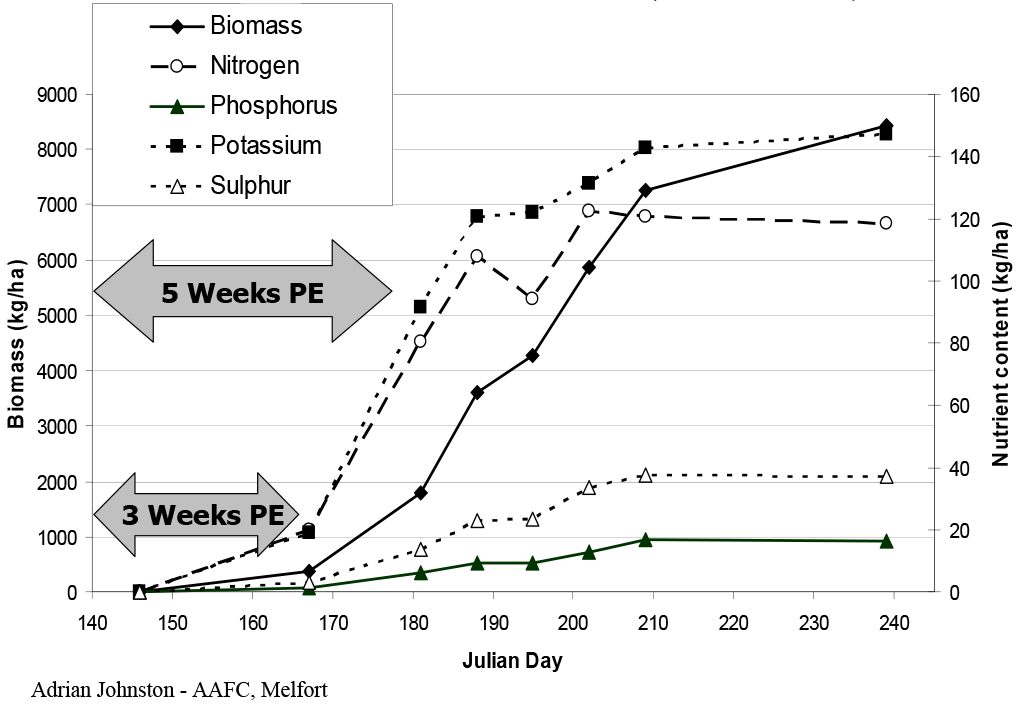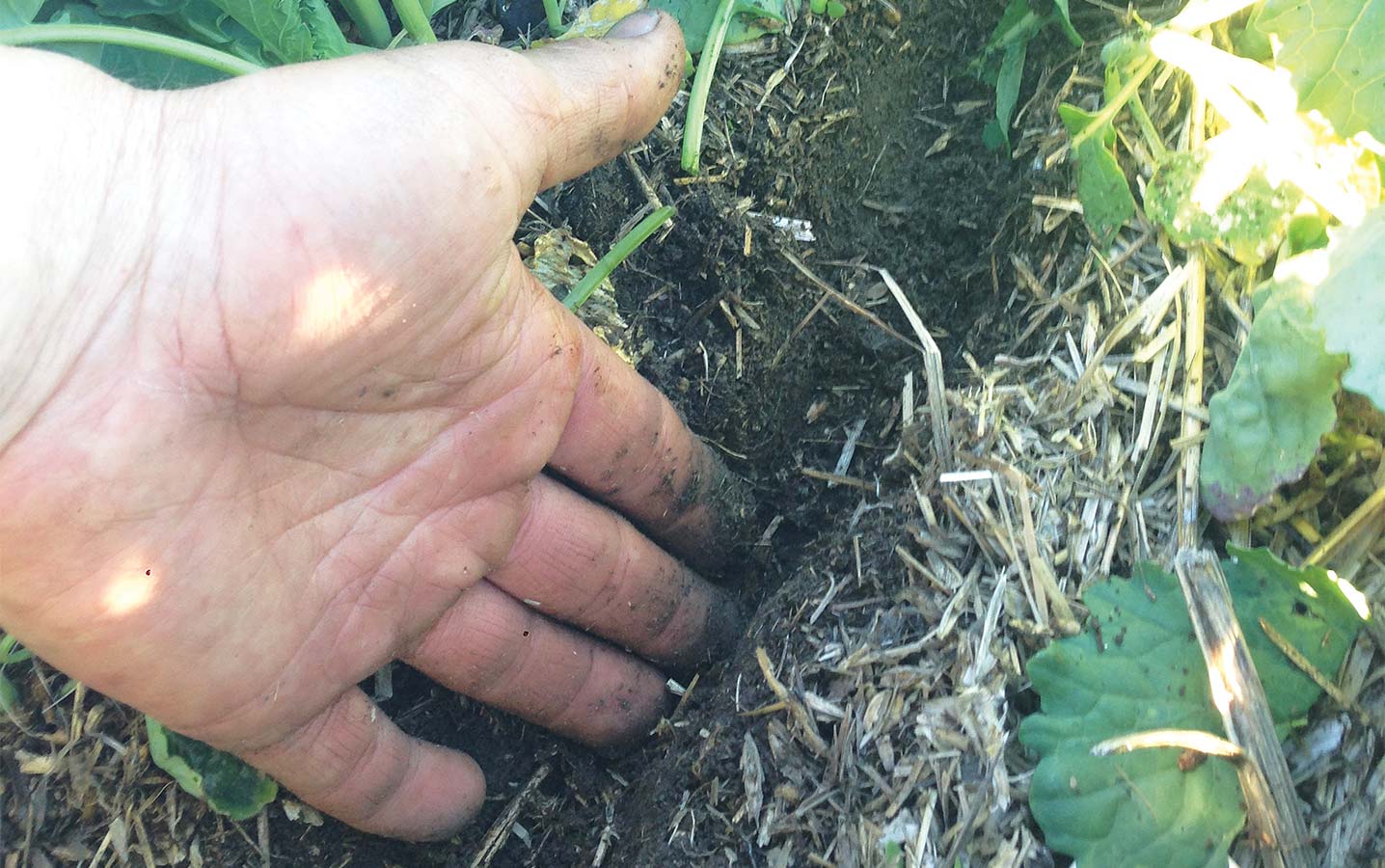Post-emergent nitrogen reduces the seeding time crunch
There was a time when broadcasting nitrogen (N) made sense – the 1960s. Ammonium nitrate (34-0-0) fertilizer was common, gaseous losses were minor, investment in application equipment was economical and large volumes could be floated on quickly.
However, the disappearance of ammonium nitrate meant urea (46-0-0) became the nitrogen fertilizer of choice, which came with gaseous losses and poor nitrogen use efficiency (NUE) when broadcast. Floaters became a thing of the past for most farmers as they moved to deep banding and one-pass no-till seeding.
But are we going backward into the future?
“Unfortunately, we are seeing a trend back to broadcasting nitrogen,” says Warren Ward, Canola Council of Canada agronomy specialist at Springside, Saskatchewan. “As farms are getting larger, the decision to broadcast is purely logistical. You can cover ground a lot faster with a floater than with a pre-seed band or one-pass seeding operation,”
Ward says broadcasting urea comes with agronomic and environmental impacts. Yield can be lower with broadcast applications and ammonia losses can be high (but can be mitigated with a urease inhibitor).
“Growers are making a choice on whether those impacts are outweighed by getting the crop in the ground faster,” says Ward.
Split applications offer an alternative
Research has long shown that broadcast application has the lowest relative NUE. Average relative values for Manitoba based on time and method of placement, when spring broadcast N is given a value of 100, have been calculated. Generally, spring-banded N is the best application timing and placement option, yielding 20 per cent better than fall banded N or spring broadcast N. Saskatchewan and Alberta have similar guidelines. (See table below.)
| Source: Manitoba Fertility Guide | |
| Time and Method | Relative Values |
|---|---|
| Spring broadcast | 100% |
| Spring banded | 120% |
| Fall broadcast | 80% |
| Fall banded | 100% |
Mario Tenuta with the soil science department at the University of Manitoba recently revisited these guidelines because of advancements in technology. Advancements include enhanced efficiency nitrogen products that are protected from volatilization or nitrification or both, and seeding tools that shallow-band N in a one-pass seeding system. Tenuta wanted to find out if changes in source and placement would increase nitrogen use efficiency and reduce N2O emissions in the Red River Valley of Manitoba. The Canola Agronomic Research Program (CARP) project was funded jointly by Koch Fertilizer and the Manitoba Canola Growers.
Urea, Agrotain and SuperU were surface broadcast in the fall at 70 and 100 per cent of recommended N along with a zero-N control. Spring treatments included the same N fertilizer products and N rates in a surface broadcast, shallow-banded one inch deep and deep-banded three inches deep.
Overall, the nitrogen source did not affect canola yield. But placement and timing did. Surface spring-applied N had lower yield than spring-applied shallow or deep-banded N. Fall surface broadcast at the recommended N rate yielded 13 bushels per acre less than spring applications.
“The results verify past research that subsurface banding of granular urea improves yields compared to surface application. As well, surface application in fall is way less efficient than spring application,” says Tenuta. “There was no benefit to yield in using granular urea with urease alone or urease plus nitrification inhibitors to yield. However, urease plus nitrification inhibitor did reduce N2O and NH3 loses for surface-applied granular urea.”
Certainly, the volume of fertilizer put down in a one-pass operation is much higher now than in the 1980s when the move to no-till began. With improved genetics and higher yield potential, Ward says common fertilizer application rates for a 50-bushel per acre canola crop are 130 lb./ac. of N, 40 lb./ac. of phosphate, 20 of potassium (K2O) and 30 of sulphur. The overall volume of fertilizer is quickly reaching 400 lb./ac.
Bryce Cowling, who farms at Hamiota, Manitoba, sought a different solution to tackle the volume of fertilizer put down in a one-pass seeding system. Typically, he put down between 110 and 140 lb./ac. of N in a one-pass sideband with his Seed Hawk air drill. He applied a combination of liquid and granular N, but his N requirement along with other nutrients meant 60 acres per fill at seeding.
Motivated by a demonstration conducted by Steve Larocque, a farmer and agronomist at Three Hills, Alberta, Cowling invested in a Fast Manufacturing 8200 coulter banding applicator to apply part of his N after emergence. Now Cowling applies 80 lb./ac. of N at seeding and another 60 lb./ac. side-banded just prior to bolting. Timing is targeted just prior to when the rate of nutrient uptake increases rapidly.
“One of the reasons we went this way was that we wanted to speed up seeding. We’ve gone from 60 acres a fill to 100 acres a fill, which helps us get the crop in faster,” says Cowling.
The liquid applicator has coulters on 24-inch centres, running between his 12-inch seed-row spacing. The 64-foot wide unit matches his 64-foot air drill width. He uses RTK guidance for both seeding and post-emergent banding. Guidance keeps the coulters between the seed rows. He says there is some implement drift from side to side – but not to the point of damaging the canola.
Larocque, who started post-emergent applications in wheat and canola in 2013 with Fast’s 8100 applicator, ran a side-by-side demonstration on canola in 2014 comparing 120 pounds of post-emergent N banded with coulters or streamed on in a liquid band. A fertilizer blend of 60-30-0-20 was side-banded at seeding. His seeding equipment didn’t have the capacity to compare a third treatment with the entire N side-banded at seeding.
Conditions for the post-emergent applications were ideal with 15 mm of rain falling the day after application. However, despite this rainfall, the side-dressed application with coulters yielded 14 per cent more than the streamed demonstration.
“With that rainfall, the streamed N should have worked just as well. I think we had so much crop residue on the surface that the N was immobilized for a period of time and the crop ran out of nitrogen,” says Larocque.
One concern farmers have with split applications is that they are already busy enough with spraying in the post-emergent season. Cowling says his post-emergent side-dressing application is relatively quick. He travels around seven to 7.5 mph and covers about 60 acres per hour.
Cowling has seen other benefits to splitting N application. “We were putting so much nitrogen in a sideband that it was compromising seedling safety.” He is seeing better stand establishment and better NUE. It has helped reduce lodging as well. As far as yields go, Cowling hasn’t made comparisons to his previous one-pass sideband system, but he doesn’t feel he is giving up any yield.

Split applications for risk management
In a three-year study from 2004 to 2006, Guy Lafond at Agriculture and Agri-Food Canada at Indian Head found that if soil moisture conditions are dry at seeding, putting down only two-thirds of N requirements is a good hedge against the weather. If rainfall occurs, the balance can be side-dressed. If conditions remain dry, farmers can assess the likelihood of a yield response from additional N.
Ward cautions that a surface dribble band or broadcast application will be at risk of volatilization. Surface applications also need rain to move N into the soil.
“From a nutrient management perspective, side-dressing is supplying nitrogen when and where it is needed,” says Ward. “Not too many people are side dressing with coulters, but I would like to see more of that rather than broadcast applications that are inefficient and have greater risk to cause environmental harm.”
Biomass Accumulation and Nutrient Uptake for Canola (cv. Quest)

SOURCE: Adrian Johnston, AAFC Melfort, based on Quest canola variety.





